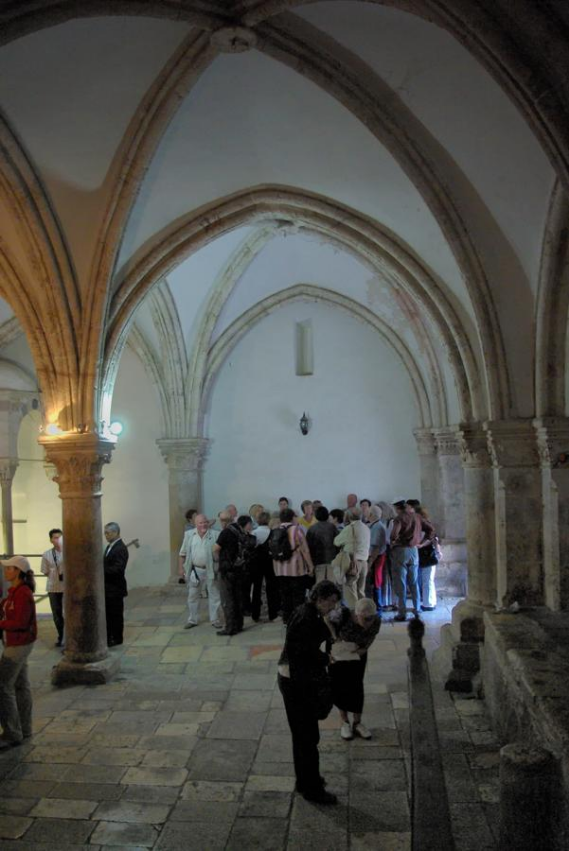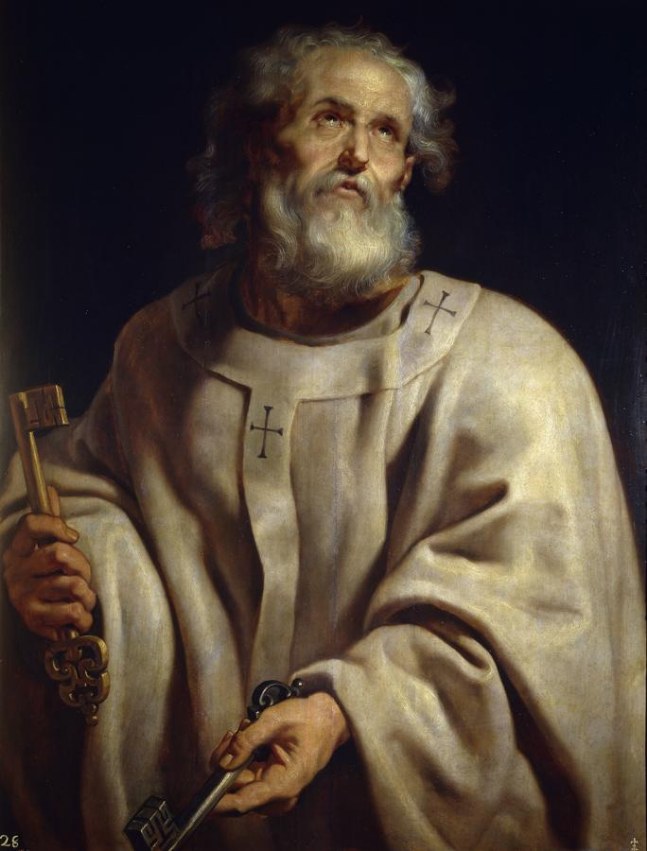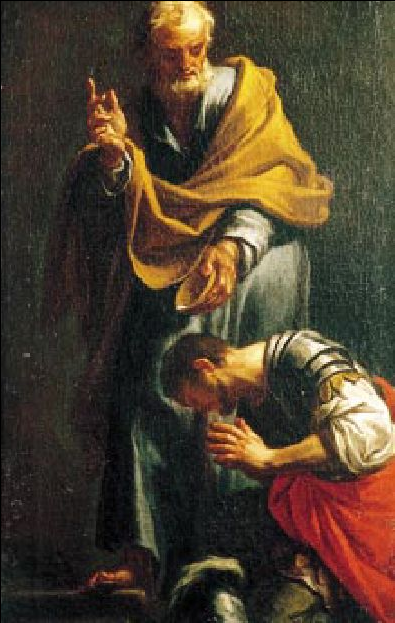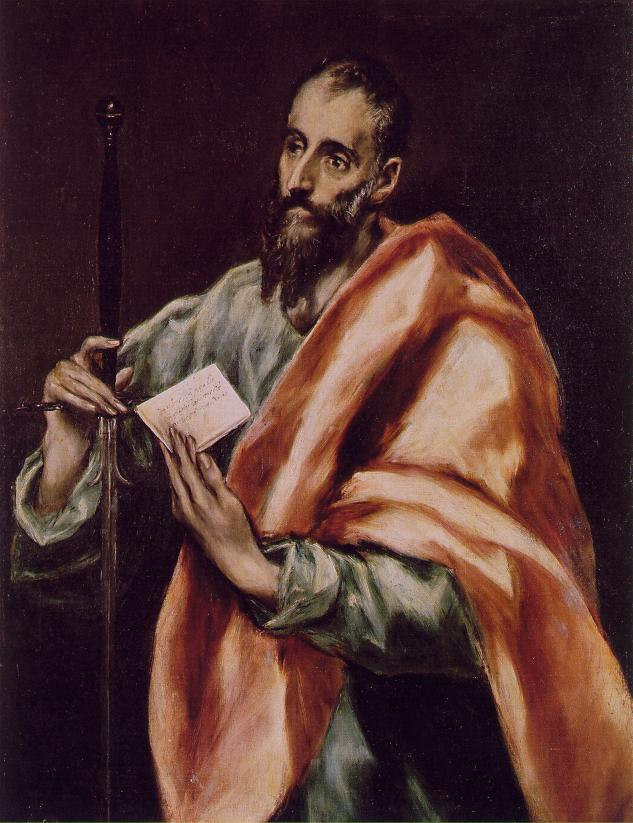
| Version | Summary | Created by | Modification | Content Size | Created at | Operation |
|---|---|---|---|---|---|---|
| 1 | Sirius Huang | -- | 2165 | 2022-10-26 01:42:13 |
Video Upload Options
The Apostolic Age of the history of Christianity is traditionally regarded as the period of the Twelve Apostles, dating from the Great Commission of the Apostles by the risen Jesus in Jerusalem around 33 AD until the death of the last Apostle, believed to be John the Apostle in Anatolia c. 100. Traditionally, the Apostles are believed to have dispersed from Jerusalem, founding the Apostolic Sees. It holds special significance in Christian tradition as the age of the direct apostles of Jesus Christ. One major primary source for the "Apostolic Age" is the Acts of the Apostles, but its historical accuracy is questioned by some and its coverage is partial, focusing especially from Acts 15:36 onwards on the ministry of Paul (an apostle to the Gentiles, but not one of the original twelve apostles – Rom. 1:1; 11:13) and his companions, and ending around 62 AD with Paul preaching in Rome under house arrest. According to most scholars, the followers of Jesus were composed principally from apocalyptic Jewish sects during the late Second Temple period of the 1st century. Some Early Christian groups were strictly Jewish, such as the Ebionites and the early-church leaders in Jerusalem, collectively called Jewish Christians. During this period, they were led by James the Just. According to Acts 9:1–2, they described themselves as 'disciples of the Lord' and [followers] 'of the Way', and according to Acts 11:26 a settled community of disciples at Antioch were the first to be called 'Christians'. Saul of Tarsus, commonly known as Paul the Apostle, persecuted the early Jewish Christians, such as Saint Stephen, then converted and adopted the title of "Apostle to the Gentiles" and started proselytizing among the Gentiles. He persuaded the leaders of the Jerusalem Church to allow Gentile converts exemption from most Jewish commandments at the Council of Jerusalem. According to the Oxford Dictionary of the Christian Church, Paul's influence on Christian thinking is more significant than any other New Testament author, however the relationship of Paul the Apostle and Judaism is still disputed today (see the link for details). After the Destruction of the Second Temple in AD 70 during the First Jewish-Roman War, or at the latest following the Bar Kokhba revolt of 132, Jerusalem ceased to be the center of the Christian church, and its bishops became "suffragans" (subordinates) of the Metropolitan bishop of Caesarea. In the 2nd century, Christianity established itself as a predominantly Gentile religion that spanned the Roman Empire and beyond.
1. Significance

The apostolic period between the years 30 and 100 produced writings attributed to the immediate followers of Jesus Christ. The period is traditionally associated with the apostles, hence the tags "apostolic times" and "apostolic writings". The early church associated the New Testament books with the apostles. Modern "liberal" scholarship has cast doubt on the authorship of some New Testament books—however, most accept that the New Testament books were written during this period. In the traditional (and scholastically accepted) history of the Christian church, the Apostolic Age was the foundation of the church's history.[2]
The Apostolic Age is particularly significant in Restorationism, which claims that the period exhibited a purer form of Christianity that should be restored to the church as it exists today.
The unique character of the New Testament writings, and their period of origin, is highlighted by the paucity of their literary form in later writing. Once the canon of the New Testament began to take shape, the style ceased to be used on a regular basis. Non-canonical writings persisted, but died out within a historically short period of time. Early patristic literature is dominated by apologetics and makes use of other literary forms borrowed from non-Christian sources.[3]
2. Early Leaders

The relatives of Jesus lived in Nazareth since the 1st century. Some of them were prominent early Christians. Among those named in the New Testament are his mother and four of his brothers: James, Simeon, Joseph and Jude. According to the Gospels, some of the family opposed the mission and religion of Jesus. The relatives of Jesus were accorded a special position within the early church, as displayed by the leadership of James in Jerusalem.[4]
According to 19th-century German theologian F. C. Baur early Christianity was dominated by the conflict between Peter who was law-observant, and Paul who advocated partial or even complete freedom from the law. Later findings contradicted this hypothesis. The allegedly continuous conflict was not supported by the available evidence. However, theological conflict between Paul and Peter is recorded in the New Testament and was widely discussed in the early church. Marcion and his followers stated that the polemic against false apostles in Galatians was aimed at Peter, James and John, the "Pillars of the Church", as well as the "false" gospels circulating through the churches at the time. Irenaeus and Tertullian argued against Marcionism's elevation of Paul and stated that Peter and Paul were equals among the apostles. Passages from Galatians were used to show that Paul respected Peter's office and acknowledged a shared faith.[5][6]
Scholar James D. G. Dunn has proposed that Peter was the "bridge-man" between the two other prominent leaders: Paul and James the Just. Paul and James were both heavily identified with their own "brands" of Christianity. Peter showed a desire to hold on to his Jewish identity, in contrast with Paul. He simultaneously showed a flexibility towards the desires of the broader Christian community, in contrast to James. (This balance is illustrated in the Antioch episode related in Galatians 2.)
3. Jewish Background
According to modernist higher criticism scholars who emerged since the 18th century in Protestant Europe: Early Christianity was a Jewish eschatological faith. The Book of Acts reports that the early followers continued daily Temple attendance and traditional Jewish home prayer. Other passages in the New Testament gospels reflect a similar observance of traditional Jewish piety such as fasting, reverence for the Torah (commonly translated as "the Law" in English translations of the Bible) and observance of Jewish holy days. The earliest form of Jesus' religion is best understood in this context. However, there was great diversity in local variations, as each succeeded or failed in different ways. Regardless, Jesus was a pious Jew, worshipping the Jewish God, preaching interpretations of Jewish law and accepted as the Jewish Messiah by his disciples.[7] Proponents of higher criticism claim that regardless of how one interprets the mission of Jesus, that he must be understood in context as a 1st-century Palestinian Jew.[8][9] Orthodox and Catholic Christianity, including the Church Fathers, on the other hand, tend to place a sharp distinction between Israel (which the Church claims to be the heir of) and the Pharisees (i.e., "Jews", forefathers of modern Judaism), as well as placing a central focus on his divine nature.
3.1. Religious Climate
The religious climate of 1st century Judea was quite diverse with numerous variations of Judaic doctrine, many attempts to establish an ideal holy community and divergent ideas about Israel's future hopes. Modern scholars place normative Rabbinic Judaism after the time of Jesus; see also School of Jamnia. The Pharisees were but one sect and did not have the overwhelming influence in 1st century Judea traditionally attributed to them. The ancient historian Josephus noted four prominent groups in the Judaism of the time: Pharisees, Sadducees, Essenes and Zealots. Jesus dealt with a variety of sects, most prominently discussing the Law with Pharisees and debating about bodily resurrection with the Sadducees. Jesus also directly associated with John the Baptist, who is often associated with the Essenes.[10]
3.2. Relationship with the Essenes
Scholars such as James Tabor state that Essenes and early Christians had a number of similar beliefs. The Essenes practised baptism, believed in a New Covenant, were messianic and believed themselves a remnant of the faithful preparing the way for the reign of God's glory. They called their group by names that would later be used by Christians, such as The Way and the Saints. Jesus preached a number of doctrines similar to Essene Halacha. They followed a charismatic leader who was opposed and possibly killed at the instigation of the Pharisees. John the Baptist seems to have risen out of this context.[11]
Some scholars, such as Carsten Peter Thiede, dispute this presentation. Early Christian leaders did not have to visit Qumran to have heard of Essene beliefs and read their texts. The various Jewish groups, including Christians and Essenes, were interconnected and simultaneously adopted some practices and beliefs while rejecting others. While some similarities exist, there are many differences and similar parallels can be also drawn between the early Christians and Pharisees, and other Jewish sects. Many features of Christian faith have no parallels in the texts from Qumran, and some that do are fundamentally distinct from Essene practices and beliefs. Notably, John's act of penitent baptism bears little resemblance to the daily baptismal ritual of the Essenes.[12]
4. First Gentile Converts

The Roman centurion Cornelius of Caesarea Maritima is traditionally considered the first Gentile convert. His conversion, as documented in Acts 10, carries great significance. Cornelius was referenced by both Peter and James in arguing for the inclusion of Gentiles in the Council of Jerusalem. His conversion is broadly considered to have been the beginning of a broader mission to the Gentiles, who would come to eclipse the Jews among Christians.[13]
The story of Cornelius' conversion is thematically connected with, and parallels, the conversion stories of the Samaritans, Paul of Tarsus and an Ethiopian eunuch in Luke-Acts. The Ethiopian was an outsider and castrated, whose presence in worship assembly would have been prohibited under the Mosaic law (Deut 23:1). This is consistent with the theme of Luke, advocating a "universal" faith and mission. Ethiopia was considered in antiquity to be the southernmost end of the world. Thus, the Ethiopian's conversion can also be interpreted as a partial fulfillment of the mission presented in Acts 1 to bring the Gospel to the "ends of the earth". Some scholars assert that the Ethiopian eunuch was the first Gentile convert, stating that those resisting this conclusion are doing so to preserve the traditional interpretation of Cornelius as the first convert. Regardless of the primacy of either convert, this episode relates Luke's view of how (through Phillip) the Gospel reached the "ends of the earth" and the mission to the Gentiles was initiated.[14]
5. Circumcision Controversy

Disputes over the Mosaic law generated intense controversy in early Christianity. This is particularly notable in the mid-1st century, when the circumcision controversy came to the fore. Alister McGrath stated that many of the Jewish Christians were fully faithful religious Jews, only differing in their acceptance of Jesus as the Messiah. As such, they believed that circumcision and other requirements of the Mosaic law were required for salvation. The increasing number of Gentile converts came under pressure from Jewish Christians to be circumcised in accordance with Abrahamic tradition. The issue was addressed at the Council of Jerusalem where Saint Paul made an argument that circumcision was not a necessary practice, vocally supported by Peter, as documented in Acts 15. This position received widespread support and was summarized in a letter circulated in Antioch.[15]
While the issue was theoretically resolved, it continued to be a recurring issue among Christians. Four years after the Council of Jerusalem, Paul wrote to the Galatians about the issue, which had become a serious controversy in their region. There was a burgeoning movement of Judaizers in the area that advocated adherence to traditional Mosaic laws, including circumcision. According to McGrath, Paul identified James the Just as the motivating force behind the movement. Paul considered it a great threat to his doctrine of salvation through faith and addressed the issue with great detail in Galatians 3.[16]
6. Apostolic Church in Jerusalem
In 66, the Jews revolted against Rome.[17] Rome besieged Jerusalem for four years, and the city fell in 70.[17] The city was destroyed, including the massive Temple, and the population was mostly killed or removed,[17] although, according to Epiphanius of Salamis,[18] the Cenacle survived at least to Hadrian's visit in 130. A scattered population survived.[17] Traditionally it is believed the Jerusalem Christians waited out the Jewish–Roman wars in Pella in the Decapolis.[19] The Sanhedrin (of Judaism) reformed in Jamnia.[20] Prophecies of the Second Temple's destruction are found in the synoptics,[21] and are part of the argument for Supersessionism. After the Bar Kokhba revolt, Hadrian barred all Jews from Jerusalem which was renamed Aelia Capitolina, hence the subsequent Jerusalem bishops were Gentiles.
Jerusalem received special recognition in Canon VII of Nicaea in 325, without yet becoming a metropolitan see,[22] and was later named as one of the Pentarchy, but the later was never accepted by the Church of Rome.[23]
References
- Bargil Pixner, The Church of the Apostles found on Mount Zion, Biblical Archaeology Review 16.3 May/June 1990 http://www.centuryone.org/apostles.html
- Brown (1993). p. 10.
- Brown (1993). pp. 10–11.
- Taylor (1993). p. 224.
- Keck (1988).
- Pelikan (1975). p. 113.
- citation needed
- White (2004). pp. 127–128.
- Ehrman (2005). p. 187.
- Wylen (1995). pp. 133, 136.
- Tabor (1998).
- Thiede (2003). pp. 189–192.
- Freedman (2000). p. 285.
- Mills (1997) pp. 22–23.
- McGrath (2006). p. 174.
- McGrath (2006). pp. 174–175.
- "Jerusalem." Cross, F. L., ed. The Oxford Dictionary of the Christian Church. New York: Oxford University Press. 2005
- Catholic Encyclopedia: Jerusalem (A.D. 71–1099): "Epiphanius (d. 403) says that when the Emperor Hadrian came to Jerusalem in 130 he found the Temple and the whole city destroyed save for a few houses, among them the one where the Apostles had received the Holy Ghost. This house, says Epiphanius, is "in that part of Sion which was spared when the city was destroyed" — therefore in the "upper part ("De mens. et pond.", cap. xiv). From the time of Cyril of Jerusalem, who speaks of "the upper Church of the Apostles, where the Holy Ghost came down upon them" (Catech., ii, 6; P.G., XXXIII), there are abundant witnesses of the place. A great basilica was built over the spot in the fourth century; the crusaders built another church when the older one had been destroyed by Hakim in 1010. It is the famous Coenaculum or Cenacle — now a Moslem shrine — near the Gate of David, and supposed to be David's tomb (Nebi Daud)."; Epiphanius' Weights and Measures at tertullian.org.14: "For this Hadrian..." http://www.newadvent.org/cathen/08355a.htm
- Eusebius, Church History 3, 5, 3; Epiphanius, Panarion 29,7,7–8; 30, 2, 7; On Weights and Measures 15. On the flight to Pella see: Bourgel, Jonathan, "The Jewish Christians’ Move from Jerusalem as a pragmatic choice", in: Dan Jaffe (ed), Studies in Rabbinic Judaism and Early Christianity, (Leyden: Brill, 2010), pp. 107—138 (https://www.academia.edu/4909339/THE_JEWISH_CHRISTIANS_MOVE_FROM_JERUSALEM_AS_A_PRAGMATIC_CHOICE); P. H. R. van Houwelingen, "Fleeing forward: The departure of Christians from Jerusalem to Pella," Westminster Theological Journal 65 (2003), 181–200.
- Jewish Encyclopedia: Academies in Palestine http://jewishencyclopedia.com/view.jsp?artid=711&letter=A&search=Academy%20of%20Jabneh
- Harris, Stephen L. Understanding the Bible. Palo Alto: Mayfield. 1985.
- Schaff's Seven Ecumenical Councils: First Nicaea: Canon VII: "Since custom and ancient tradition have prevailed that the Bishop of Aelia [i.e., Jerusalem] should be honoured, let him, saving its due dignity to the Metropolis, have the next place of honour."; "It is very hard to determine just what was the "precedence" granted to the Bishop of Aelia, nor is it clear which is the metropolis referred to in the last clause. Most writers, including Hefele, Balsamon, Aristenus and Beveridge consider it to be Cæsarea; while Zonaras thinks Jerusalem to be intended, a view recently adopted and defended by Fuchs; others again suppose it is Antioch that is referred to." http://www.ccel.org/ccel/schaff/npnf214.vii.vi.x.html
- Encyclopædia Britannica "Quinisext Council". Encyclopædia Britannica. Retrieved February 14, 2010. "The Western Church and the Pope were not represented at the council. Justinian, however, wanted the Pope as well as the Eastern bishops to sign the canons. Pope Sergius I (687–701) refused to sign, and the canons were never fully accepted by the Western Church". http://www.britannica.com/EBchecked/topic/487431/Quinisext-Council




